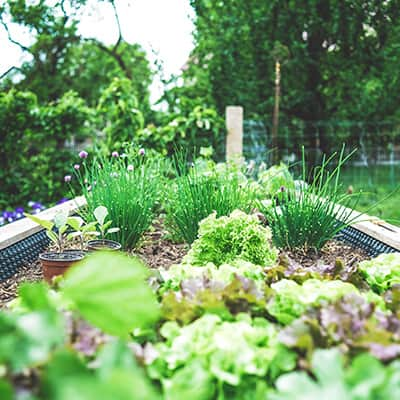Vegetable Gardening Basics

The topic of vegetable gardening has a tendency to overwhelm beginners. Even so, you should not be intimidated because anyone can master the basics. Seeds want to sprout. Plants want to bloom and bear fruit. Your role is to give the plants everything that they need to thrive and yield big crops.
What You Need to Start Your Vegetable Garden
Growing healthy and delicious food relies on meeting these basic needs:
- A location with at least 6 hours, but ideally more, of direct sun exposure
- Good soil
- Fertilizer
- Access to water
- Seeds and/or young plant starts
Your garden location could be a big yard or a sunny patio. You can work with the soil already in place or choose to grow in containers. You can do both in the same spot if you wish.
The best soil for a vegetable garden is rarely present where you choose to garden, but you can always make improvements. Gardeners typically build their soil over the long term by mulching with compost and adding soil amendments to boost nutrients or increase water retention.
The subject of nutrients leads to choosing fertilizers to help your plants as they grow. You select fertilizers based on the nutrient needs of individual plants and soil deficiencies detected by a soil test.
In a container garden, you can select nutrient-rich specialty soils for filling the pots. The formulation of potting soils typically supplies necessary nutrients, but some plants will require additional nutrient applications while growing.
Planning Your Vegetable Garden Layout
Taking the time to plan where to plant vegetables improves success. Some people use vegetable garden planner software or online tools, but sketching a plan with pen and paper gets the jobs done if that’s what you have.
When making your garden plan, consider the spacing needs for individual plants. Seed packets and plant labels provide this information. You should also think about if the plants will cast shade on other plants and interfere with their growth. For this reason, you can place tall plants, like corn or staked tomatoes on the northern edge and put shorter plants on the southern edge.
Choose the Right Plants for Your Vegetable Garden
Not every variety of vegetable does well anywhere. Pay attention to the growing zones associated with the seeds or plants that you are considering. You want varieties adapted to your climate and other growing conditions.
You’ll want to watch the weather and keep track of rainfall and daily temperatures. This information informs your decisions about how much to water. Ideally, water is applied near the roots early in the morning before temperatures rise. You should avoid watering in the hottest part of the day when the plants are stressed.












